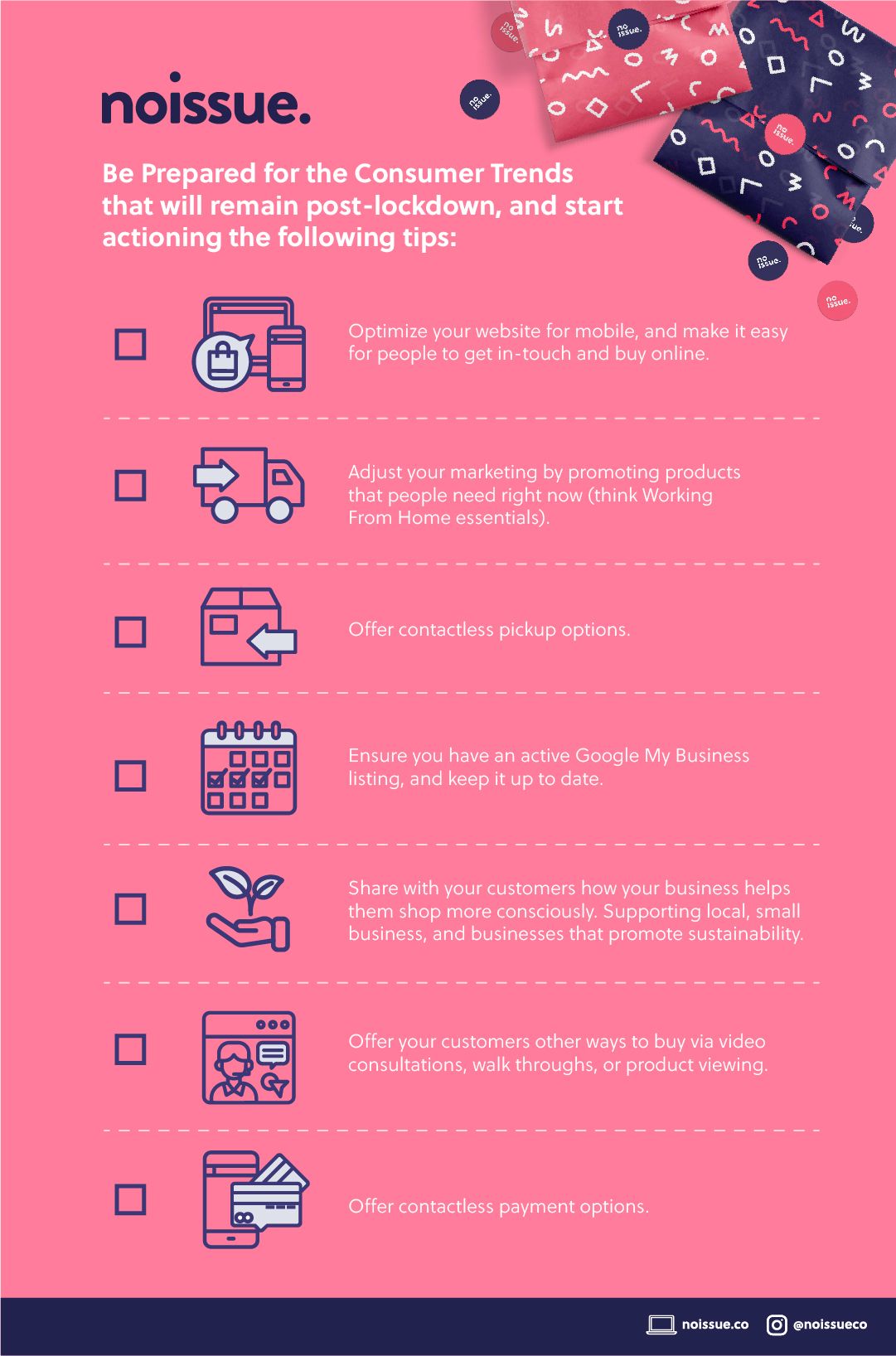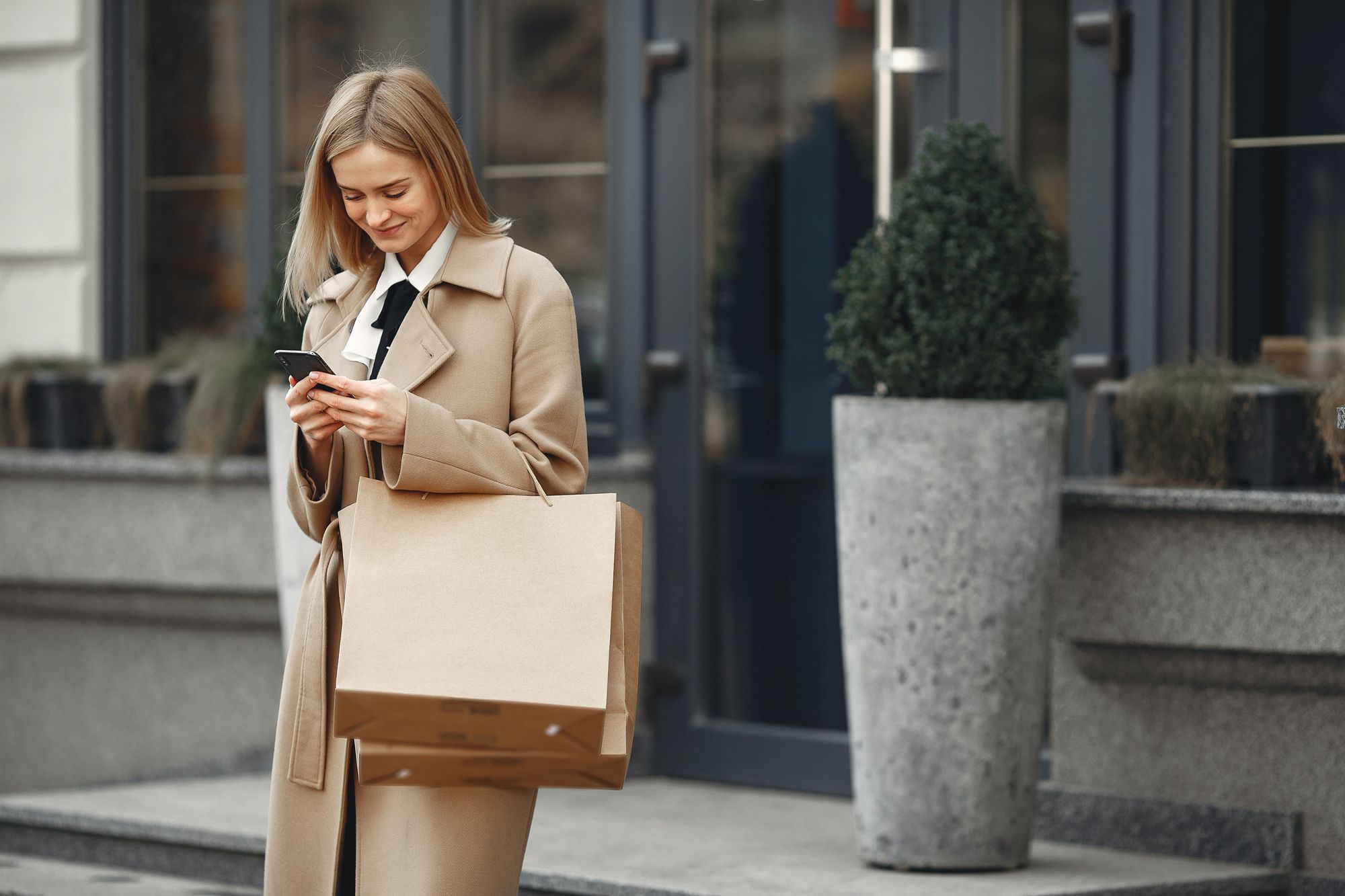We’ll cut right to the chase: COVID-19 has fundamentally changed how things are done worldwide.
No matter what type of business you’re running, it’s safe to say that your customers’ needs and priorities have shifted. And while some of those changes are temporary (for example, working from home or not having large gatherings), certain behaviors are here to stay.
This post highlights these notable trends and will give you tips on how your business can capitalize on them. There's a handy checklist at the end to help you action all the tips in this post.
Read on!
Ecommerce adoption has grown
According to recent data from COVID-19 Commerce Insights, consumers making online purchases in the US are increasing at the rate of over 100% compared to last year’s records. Stay-at-home orders across the country mean about 95% of the US population are forced to switch from in-store to online shopping.
What to do in your business
There’s no better time to boost your ecommerce presence. Make sure that your site can support the needs of your business and customers.
Here are some quick tips you can implement immediately:
- Rid your website of all forms of clutter. Avoid walls of text, use images, and shorten sentences. Doing so helps with load time and ensures that information is communicated effectively. A clutter-free site is also easier on the eyes, and it allows visitors to quickly find what they need and have a better experience overall.
- Ensure there is a clear CTA (call to action) on the homepage and other relevant pages. Your CTA should be consistent across your website. This reinforces familiarity for visitors.
- Optimize for mobile. More than half of the people accessing the web do so from a smartphone, so you’re missing out on traffic and sales opportunities if your site doesn’t look good on the small screen.
- Invest in quality content. Doing so will improve your SEO profile and will make your site more engaging overall. Consider video content, testimonials, detailed product descriptions, and regular blogs.
- Speed up your site. Aim for 3 seconds, otherwise you risk losing 40% of visitors.
- Make it easy for people to buy. It’s a purchase, not a cross-examination. Shorten the checkout journey, ask for only relevant information, and get people out the (virtual) door in fewer steps.
- Send abandoned cart emails. Retarget abandoned carts, as you investigate reasons for abandonment.
- Recognize that more options aren’t always better. Follow Hick’s Law to eliminate “analysis paralysis” for your visitors by offering fewer options.
More people working from home
Remote work, which used to be more prevalent for those active in the gig economy, has become the norm for businesses during the pandemic.
Many companies realized that people can still be productive even when working from home. So we can expect businesses and their staff to keep some of the WFH practices they've adopted during the lockdown.
This doesn't necessarily mean everyone will be working remotely going forward; more likely, businesses will be flexible or implement hybrid models where people can stay home to work on certain days of the week.
What to do in your business
Strategically align your sales and marketing efforts to reflect the new WFH realities. Depending on the business, your customers may now need goods and services that will make their new work situations more productive.
Perhaps, instead of "office-centric" images and copy, you can move towards messaging about WFH.
In some cases, you may need to modify your product assortments (or your messaging around them) so you can appeal to people who are working from home.
Nordstrom, for example, started heavily promoting apparel that customers can wear while working from home. Check out the email below, where Nordstrom put together a “WFH wardrobe.”
Higher demand for contactless order fulfillment
COVID-19 has accelerated trends around contactless shopping. The need for curbside pickup, in particular, has increased. Shoppers want to get their items quickly without putting themselves at risk by going inside the store.
Fast-forward to the post-lockdown period. While consumers will go back to shopping in-store, we can expect some people to opt for curbside pickup more often.
What to do in your business
If you sell physical products, start implementing contactless fulfillment options like curbside pickup. Big box retailers like Walmart and Target have been doing it for a while, but today, even smaller players can get in on the fun.
We've seen smaller businesses — including independent bookstores and neighborhood grocery stores — implement the service during the lockdown period. The key to making it work is clear customer communication on order status, arrival times, etc. Retailers also need to be organized when sorting and packing orders.
Island Pacific, a local grocery store in Cerritos, CA, does this well. Island Pacific uses an online platform to facilitate its curbside pickup. When shoppers are ready to pick up their order, they can notify the store by tapping on a link. And once they arrive, all they have to do is park in a designated spot, and notify Island Pacific that they’ve arrived.
Shopping and sourcing locally
One thing that COVID-19 taught consumers is the value of locally-sourced products. Social distancing has prodded shoppers to find and buy from local merchants — and this is a trend that will continue even after the pandemic. In a recent EY survey, 34% of respondents say they will buy and pay more for local products post-COVID-19.
Shoppers have realized that the grass is already green on their side, and they don’t need to look too far to find the products and services they need.
What to do in your business
Improve your local presence. Set up your listings on Google My Business, Yelp, and quality local directories (online and offline) to ensure that local shoppers can find you. Don’t forget to collect reviews on these platforms.
Grain & Vine, a New York-based liquor does this well. Check out its Google My Business listing, which contains a complete profile of the business, along with photos and hundreds of positive reviews.
If you do business online (e.g., local artists or retailers who sell via e-commerce) get in front of shoppers in your area and emphasize your local delivery services.
Going back to Grain & Vine, the retailer offers same-day delivery to local customers, and it has a special section on its website outlining how the service works.
More conscious shopping
According to Accenture, COVID-19 has accelerated conscious consumption, and shoppers will continue to "limit food waste, shop more cost consciously, and buy more sustainable options." The pandemic has prompted many to reevaluate their priorities and what really matters.
What to do
Double down on sustainability. Make your products and business practices more environment-friendly and continuously find ways to improve.
Have a look at what the tea retailer Tea of Mine is doing. In addition to selling 100% organic and natural products, Tea of Mine prides itself on being a plastic-free brand. The company demonstrates those values in the products it sells, and even in its packaging.
In the post below, Tea of Mine shares that it’s using noissue’s 100% compostable mailers, as part of its mission to be more sustainable.
Heavier reliance on video technology
With all forms of physical gatherings and events called off, consumers and businesses have gone virtual. Product launches, classes, birthday parties, and even weddings and convocations are now done through video technology. From communication tools like Facetime and Zoom to good 'ol IG live, consumers and brands alike have relied heavily on video during the lockdown. We can anticipate this to live on post-pandemic.
What to do
If you and your customers used video tech to communicate during the lockdown, you may need to incorporate those practices even when things open back up. For instance, a certain segment of your shoppers may want to keep consulting you via Facetime now that they know how convenient it is. Maybe the IG live audiences that you've grown during the lockdown will continue to watch your videos.
Contactless payments are here to stay
COVID-19 is a virus easily spread through contact. Paper money is now seen as a risky item to handle, considering it is impossible to trace its journey. This is where businesses should consider digital payments like tap and go and mobile payments.
What to do in your business
If you have a brick-and-mortar store, find out how you can implement contactless payments. Depending on your existing setup, you may need to upgrade your credit card terminals or switch payment processors. Talk to your merchant services provider to figure out the right move for your biz.
Pro tip: pay attention to the data!
There are several tips and trends in this post, and while we’d love for you to take action ASAP, the fact is not every item here will apply to your business. The best thing to do is to understand your customers by looking at the data.
Have you seen an increase in online orders? Which fulfillment methods are they choosing? What are they saying in the comments? The answers to these questions will help you figure out which trends to capitalize on and how to do it right.
Final words
As the world adjusts and adapts to the new ways of doing things, consumers will continuously seek out comfort, wellness, and safety. They will remain loyal to businesses that can offer these, both during and post-lockdown. That’s why it’s important to look at the data, understand your customers, and keep finding ways to improve.
Good luck and stay safe!


